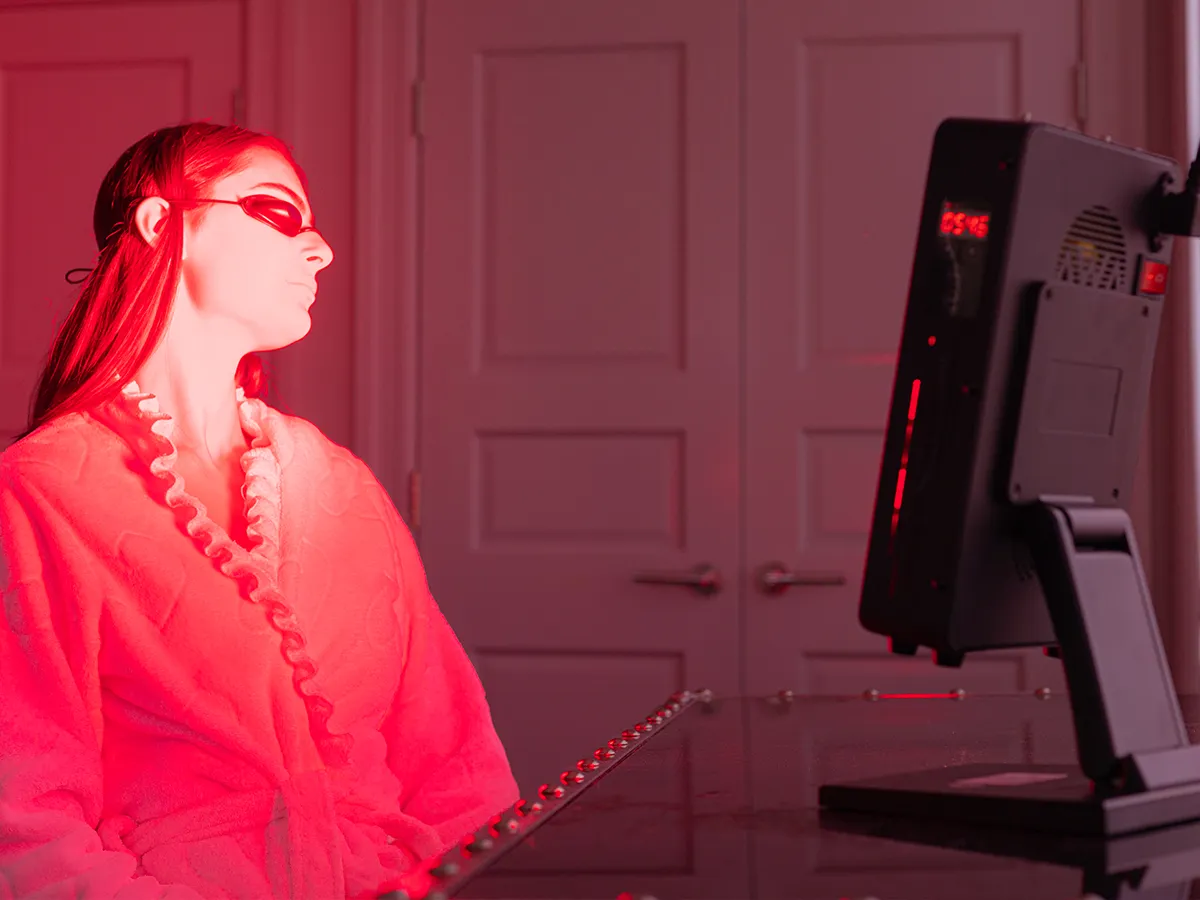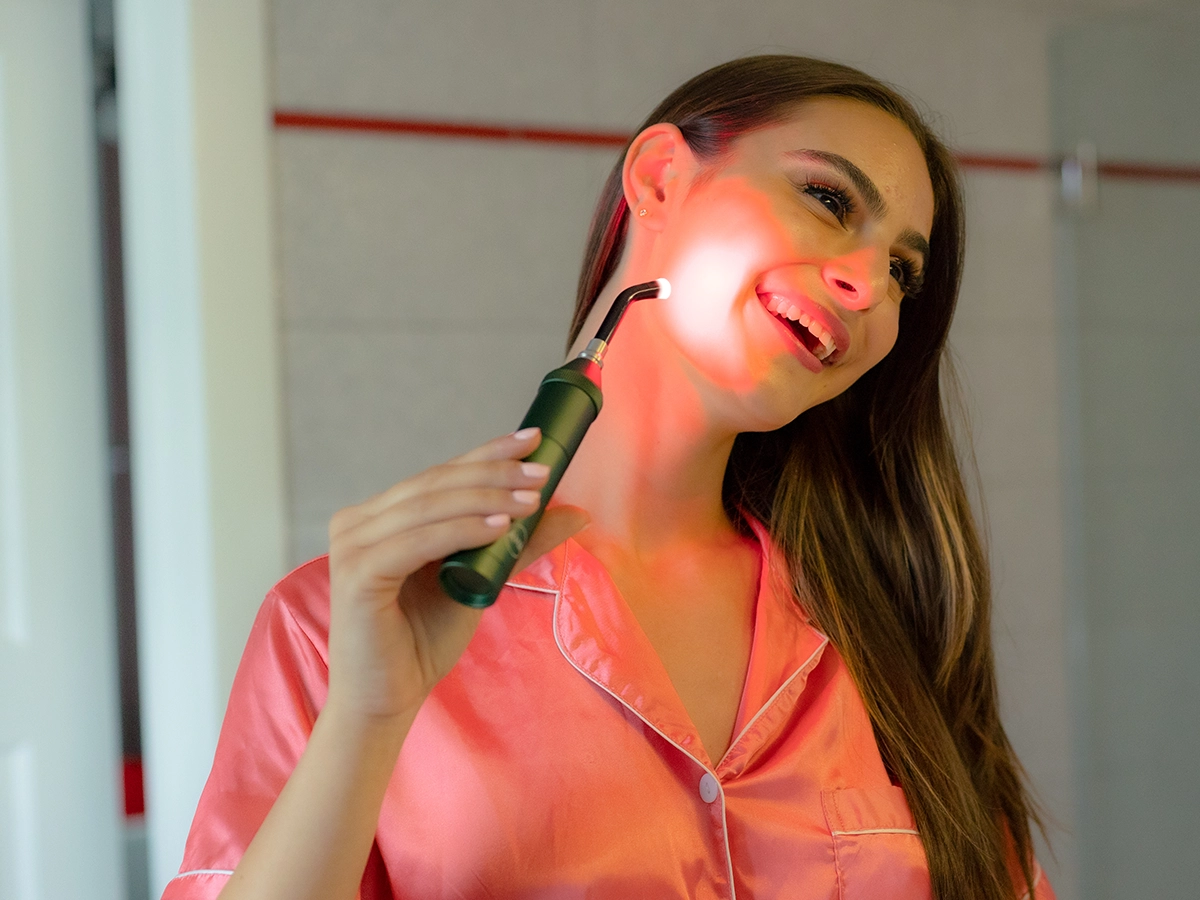Modern-day health and wellness are often punctuated with new technologies and trends. Red Light Therapy is gaining traction as one such advancement. As with any innovation, it’s surrounded by a mix of factual information and Myths About Red Light Therapy. This article strives to separate facts about Red Light Therapy from fiction, ensuring you have the most accurate information.
Red light therapy (RLT) is a therapeutic method that employs low-wavelength red light to enhance skin appearance. It has shown potential in minimizing signs of aging like wrinkles, reducing scars, alleviating redness, and combating acne. Some even believe it can address other health-related issues.
The scientific community is examining the impacts of red light therapy. While preliminary findings state its efficacy, comprehensive studies are still needed to solidify its range of benefits.
Red light therapy goes by several other monikers, such as:
The origins of red light therapy trace back to the pioneering work of a Hungarian physician named Endre Mester. In 1967, Mester, also a professor, was studying the reactions of cancer cells to radiation exposure.
In one of his experiments, Mester shaved mice to prepare them for surgery. Although his main focus was not on hair growth, he made an unexpected discovery. The mice exposed to the laser treatment not only experienced faster hair regrowth but also showed quicker wound healing compared to those that did not receive the laser exposure.
Recognizing the potential benefits of this accidental finding, by the early 1970s, Mester began using laser therapy to aid patients suffering from non-healing skin ulcers. This innovative use of light marked the early stages of what we now recognize as red light therapy.
Red light therapy, often surrounded by a mix of awe and skepticism, has transformed many lives. In the ever-evolving world of wellness, Red Light Therapy is catching a lot of attention. But as with anything popular, misconceptions tend to sprout up alongside. Here, we’re setting out on a mission to debunk those Myths About red Light Therapy and bring you the unadulterated truth. Let’s dive deep into the realm of Red Light Therapy and separate the myths from the facts.

Red light therapy might even serve as a shield against sun exposure. Some research has brought to light that this therapy might bolster the skin’s natural defense mechanisms against the sun, thereby curtailing the risk of sunburns. This protective feature emerges from the therapy’s ability to stimulate the production of melanin in the skin, which acts against sunburns.
Shifting the focus from the skin, it’s noteworthy to mention the potential benefits this therapy might harbor for eye health. Studies have pointed towards the benefits of red and near-infrared (NIR) light for the eyes. But, caution is key. No matter the potential benefits, it’s not advisable to gaze into high-powered devices.
Avoid direct eye exposure and stick to the guidelines. And when we say, “Wear protective eyewear,” we mean it.

It’s easy to assume that anything red and glowing might be skin’s arch-nemesis. But here’s the plot twist: Red Light Therapy devices are crafted to disperse heat. That warm-looking red glow? It’s designed to provide therapeutic benefits without the singe.
When of light exposure, it’s often UV rays that come to mind—those harmful agents that can cause sunburns, premature aging, and elevate skin cancer risks. Red light therapy, contrary to some misconceptions, is different from ultraviolet exposure. Its magic lies in its specific wavelength, designed not to harm but to rejuvenate.

The Reality: Scientific studies back red light therapy’s effectiveness for a myriad of health concerns. From skin rejuvenation to pain management, success stories and testimonials abound from individuals who’ve experienced its benefits firsthand.
In the realm of alternative treatments, red light therapy (RLT) has emerged as a contemporary favorite, lauded for its purported benefits ranging from skin rejuvenation to pain management. But, a growing chorus of skeptics is raising important questions about its effectiveness.
While red light therapy (RLT) has gained popularity and boasts several proponents who swear by its benefits, it’s essential to view the topic from all angles. Some skeptics question the efficacy of RLT and believe that the purported benefits may not be as effective as some claim.

The Reality: Red light therapy has deep roots, and it’s not a modern wellness trend. Over the years, its sustained use in the medical and wellness realm speaks to its genuine benefits. Consistent use can offer long-term advantages, from skin health to muscle recovery.
Red light therapy starts working the moment you use it. If you use it, you might notice changes after a few weeks. But, the time it takes to see noticeable results depends on your goals and the device you’re using. For significant changes, it takes a few weeks to a month.
A frequent misunderstanding is that every LED light therapy device functions the same way. But, with many devices out there, they differ in aspects like wavelengths, power, and suggested use. So, the key is picking the right device to meet your objectives.
The Reality: as with any wellness device, quality varies. It’s essential to select devices from trusted brands, ensuring they offer the desired wavelengths and intensities. Research and reviews can guide you to the right choice for your needs.

The Reality: While generally safe, potential side effects like mild skin irritation might occur. It’s paramount to use the therapy as recommended and consult with professionals if any concerns arise.
While sifting through the many Myths About red Light therapies surrounding red light therapy, it becomes clear that some concerns arise from misunderstandings, but science grounds the potential benefits of the therapy. As with all treatments, personal research and professional consultations are your best allies.
Red Light Therapy uses low-level wavelengths of red light. When exposed to this light, our body’s cells can produce more energy. This process can promote faster healing, reduced inflammation, and better cell performance.
If you’re considering red light therapy, it’s essential to have an open conversation with your healthcare provider. They can provide insights, guide you on its applicability to your specific needs, and recommend trustworthy devices if it’s a suitable choice.
Moreover, it’s crucial to manage expectations. Every individual’s response to treatments can vary. While some might witness notable benefits, others might experience subtler changes.
The frequency of using a red light therapy device varies based on the specific device and your desired results. Always follow the instructions that come with your device. In general, most devices suggest using them three times a week. If you’re aiming to treat acne, some recommend bumping that up to four times a week.
Why Choose Red Light Therapy Over Other Treatments?
Red Light Therapy’s surge in popularity traced back to a mix of modern challenges and technological advancements. In an era where medication side effects dominate commercials, many are gravitating towards natural, drug-free solutions, and red light therapy fits the bill. This therapy goes beyond masking symptoms; it rejuvenates at the cellular level.
Sounds like a dream? Welcome to the world of Red Light Therapy.
The buzz around it isn’t because of its gentle touch. A major boost comes from the evolution of LED technology. With it, powerful and effective treatments have become not a luxury for the few, but a reachable reality for many of us at home More and more studies are emerging, showcasing its benefits.
Red Light Therapy differs from UV tanning as it lacks harmful UV light, reducing sunburn risk by boosting melanin in the skin. Some studies also highlight its benefits for eye health, though direct exposure to high-powered devices isn’t recommended. As with any wellness trend, it’s crucial to approach with informed caution and understanding.
Some studies might have their own biases. Hence, a deeper dive is always a good idea before jumping on the wellness bandwagon.
Have you heard other Myths About Red Light Therapy? Or you’ve had a personal experience with it? Share your thoughts in the comments below. And if you found this post enlightening, consider subscribing for more myth-busting and wellness insights!
__________________________
References:
References:
©All Rights Reserved with American Wellness AuthorityTM
Sitemap | Designed & Developed by RaSu Creatives.